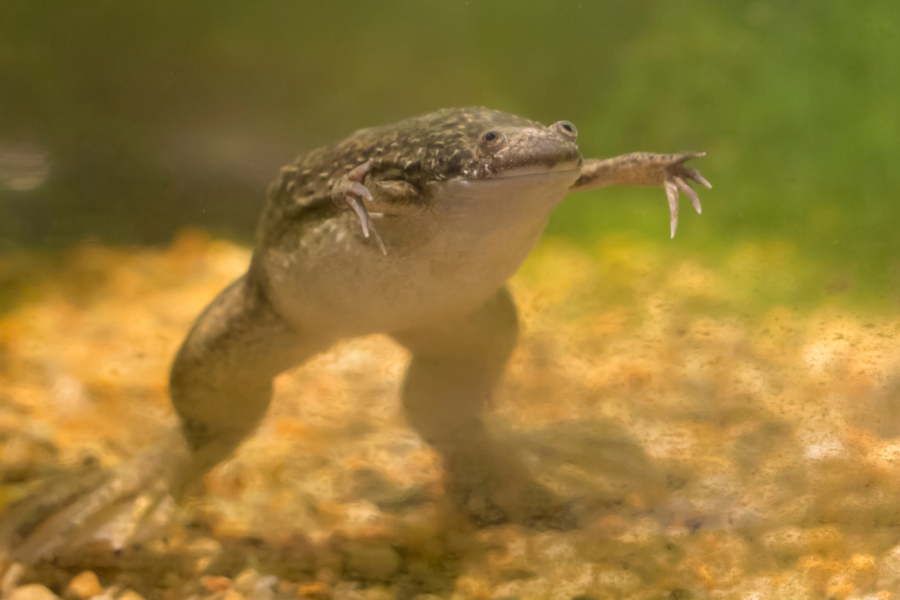Scientists using living organism robots to perform tasks ranging from radioactive waste collection to artery cleaning
Xenobots, living organism robots, are made up of thousands of skin cells from the embryo of the African clawed frog.
Scientists from the University of Vermont, Harvard University’s Wyss Institute for Biologically Inspired Engineering, and Tufts University have designed a new form of life: a Xenobot. Xenobots fall somewhere between robot and living organism because of their unique ability to self-replicate.
Xenobots were designed in 2020 on a supercomputer at the University of Vermont. The Xenobots were then assembled and tested by dumbfounded biologists at Tufts University. The robots were made up of thousands of skin cells from the embryo of a frog, specifically the African clawed frog Xenopus laevis, which gave the bots their name. “Strictly speaking, these life-forms do not have sex organs — or stomachs, brains or nervous systems,” reports The New York Times. “The one under the microscope consisted of about 2,000 living skin cells taken from a frog embryo.”
To make the Xenobots, scientists extrapolated living stem cells from frog embryos. The cells were then left to incubate, therefore, there is no manipulation of genes. “Living machines called xenobots are blobs of frog stem cells that knit themselves together,” reports sciencenews.org. “Scientists have now found that the bots can self-replicate.”
Since most people think robots are made of metals and steel, this type of robot is not necessarily what people would imagine a robot being. The Xenobots are small, skin colored creatures, similar to small, microscopic organisms, less than one millimeter wide.
When the robots were first brought to the public eye, scientists explained their abilities. According to CNN, “Xenobots could be used to clean up radioactive waste, collect microplastics in the oceans, carry medicine inside human bodies, or even travel into our arteries to scrape out plaque.”
“The xenobots can survive in aqueous environments without additional nutrients for days or weeks — making them suitable for internal drug delivery,” adds CNN. “Aside from these immediate practical tasks, the xenobots could also help researchers to learn more about cell biology — opening the doors to future advancement in human health and longevity.”
To self-replicate, the Xenobots swim around and collect as many single cells as they can inside of their petri dish. Then, the bots, after finding hundreds of those tiny cells, keep them stored within their small opening or “mouth” shaped area. After completing those steps, the collected cells grow in just a few days, forming a brand new, functional Xenobot.
With this new information about the Xenobots, scientists working on them think they can be useful for progress in regenerative medicine. Joshua Brown from the Wyss Institute at Harvard says, “If we knew how to tell collections of cells to do what we wanted them to do, ultimately, that’s regenerative medicine—that’s the solution to traumatic injury, birth defects, cancer, and aging,” according to longenvity.technology.
Brown continues to explain, “All of these different problems are here because we don’t know how to predict and control what groups of cells are going to build. Xenobots are a new platform for teaching us.”
Xenobots are going to be used for great strides in scientific research and will be used to improve the quality of life for people who have health issues. They may be compact, but they are able to perform challenging tasks that can help humans as well as the environment.
Not only can they perform different tasks, but if they are hurt or injured in some way, they can biologically repair themselves in under 10 minutes. After they are healed, they continue to do their job. Although this is such a unique form of life, the Xenobots have a short lifespan, of only seven to 10 days.
Many people don’t like the idea of robots and may even be afraid of them and what they mean for the future of our planet; however, technology is a continually developing and growing field and can be very beneficial in helping with daunting tasks as well as healthcare discoveries. New technological advances can help humans and other species for years to come.











